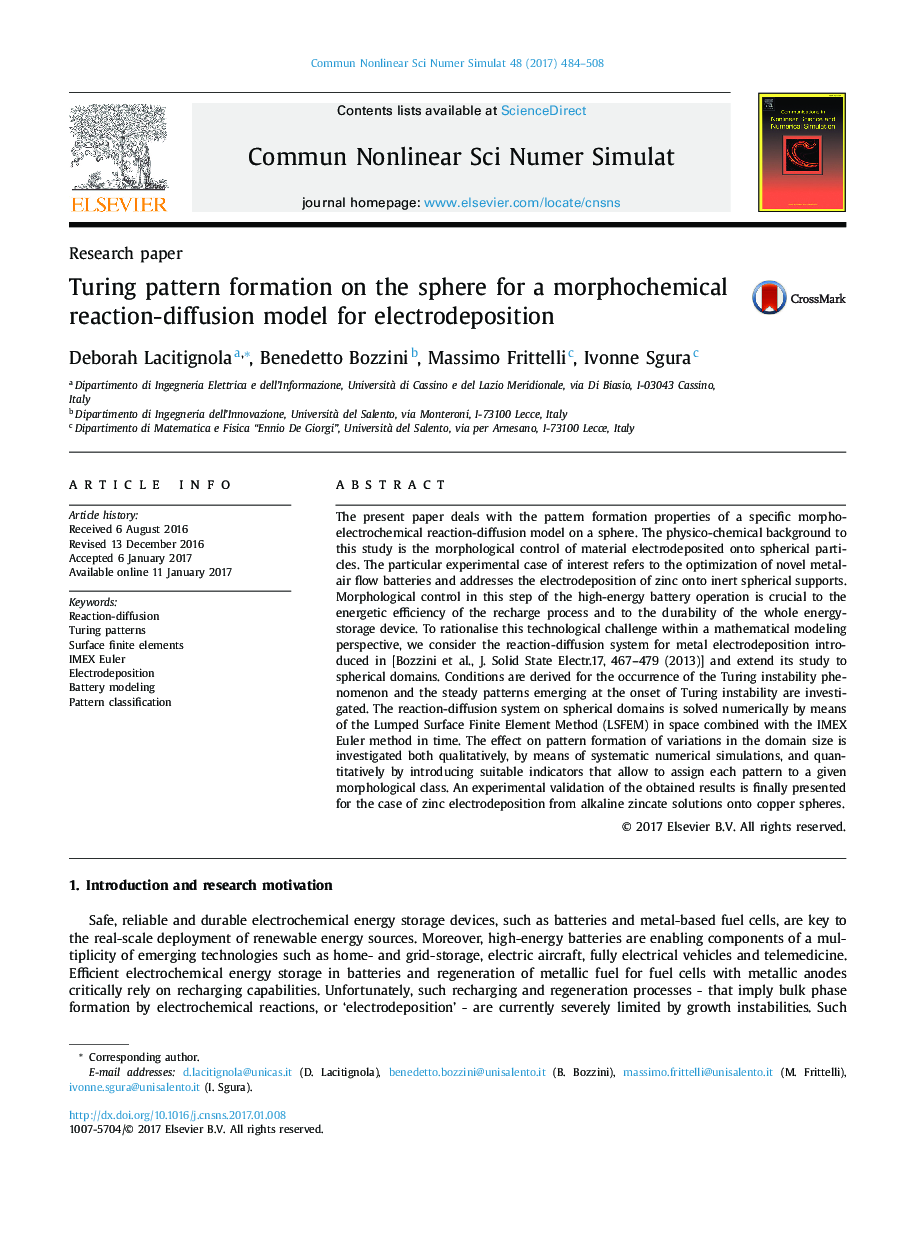| Article ID | Journal | Published Year | Pages | File Type |
|---|---|---|---|---|
| 5011616 | Communications in Nonlinear Science and Numerical Simulation | 2017 | 25 Pages |
â¢Pattern formation is considered on a morphochemical model on a sphere.â¢The steady patterns at the onset of Turing instability are investigated.â¢How variations in the domain size affect pattern formation is numerically investigated.â¢Indicators are provided that allow to assign each pattern to a given morphological class.â¢An experimental validation of the obtained results is presented.
The present paper deals with the pattern formation properties of a specific morpho-electrochemical reaction-diffusion model on a sphere. The physico-chemical background to this study is the morphological control of material electrodeposited onto spherical particles. The particular experimental case of interest refers to the optimization of novel metal-air flow batteries and addresses the electrodeposition of zinc onto inert spherical supports. Morphological control in this step of the high-energy battery operation is crucial to the energetic efficiency of the recharge process and to the durability of the whole energy-storage device. To rationalise this technological challenge within a mathematical modeling perspective, we consider the reaction-diffusion system for metal electrodeposition introduced in [Bozzini et al., J. Solid State Electr.17, 467-479 (2013)] and extend its study to spherical domains. Conditions are derived for the occurrence of the Turing instability phenomenon and the steady patterns emerging at the onset of Turing instability are investigated. The reaction-diffusion system on spherical domains is solved numerically by means of the Lumped Surface Finite Element Method (LSFEM) in space combined with the IMEX Euler method in time. The effect on pattern formation of variations in the domain size is investigated both qualitatively, by means of systematic numerical simulations, and quantitatively by introducing suitable indicators that allow to assign each pattern to a given morphological class. An experimental validation of the obtained results is finally presented for the case of zinc electrodeposition from alkaline zincate solutions onto copper spheres.
